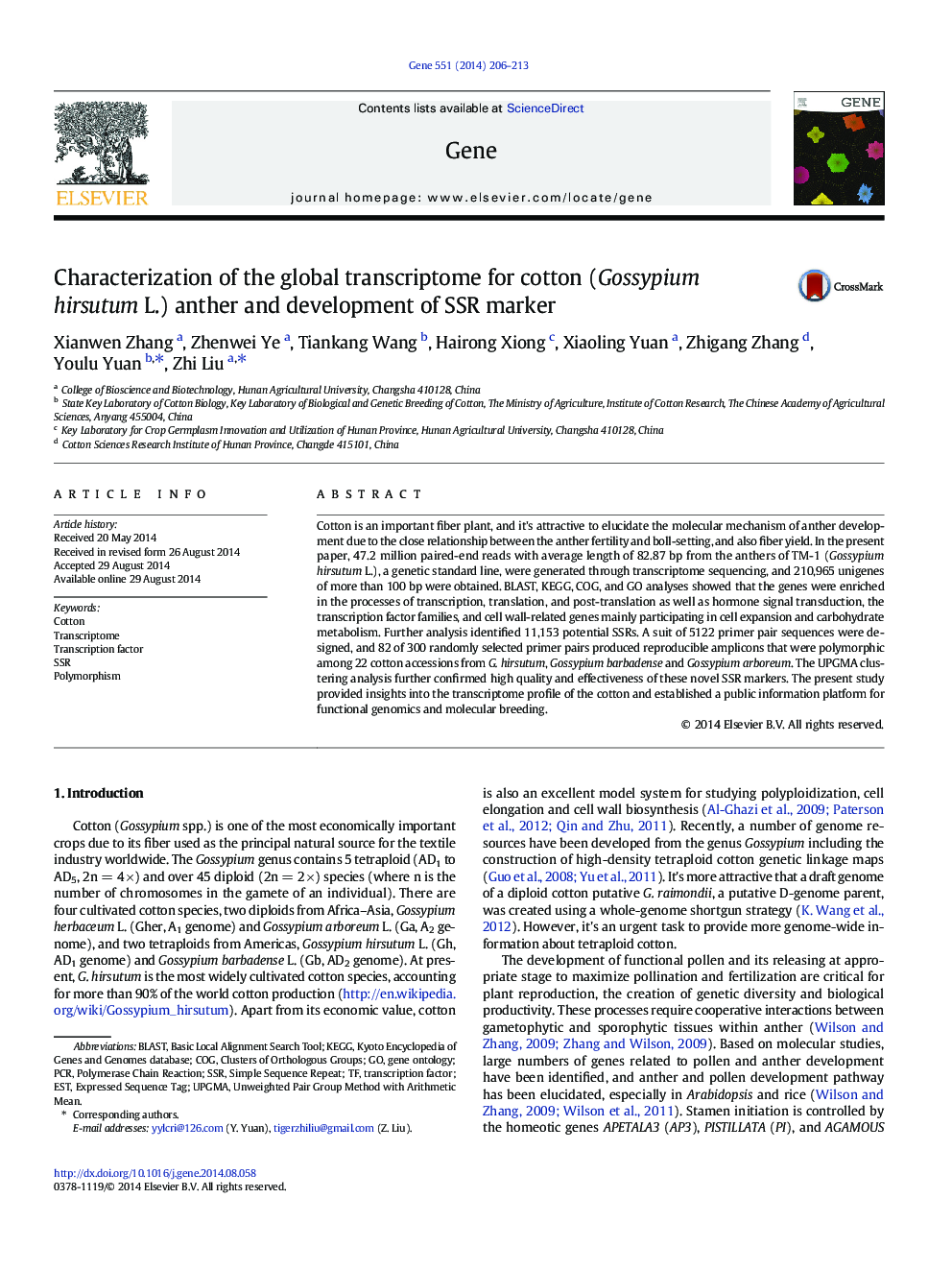| Article ID | Journal | Published Year | Pages | File Type |
|---|---|---|---|---|
| 2815994 | Gene | 2014 | 8 Pages |
•EST sequencing of the anthers of standard cotton TM-1 was performed.•47.2 million paired-end reads with average length of 82.87 bp were generated.•210,965 unigenes of more than 100 bp were obtained.•We identified 11,153 potential SSRs, and developed 5122 primer pair sequences.•UPGMA analysis confirmed high quality and effectiveness of the novel SSR markers.
Cotton is an important fiber plant, and it's attractive to elucidate the molecular mechanism of anther development due to the close relationship between the anther fertility and boll-setting, and also fiber yield. In the present paper, 47.2 million paired-end reads with average length of 82.87 bp from the anthers of TM-1 (Gossypium hirsutum L.), a genetic standard line, were generated through transcriptome sequencing, and 210,965 unigenes of more than 100 bp were obtained. BLAST, KEGG, COG, and GO analyses showed that the genes were enriched in the processes of transcription, translation, and post-translation as well as hormone signal transduction, the transcription factor families, and cell wall-related genes mainly participating in cell expansion and carbohydrate metabolism. Further analysis identified 11,153 potential SSRs. A suit of 5122 primer pair sequences were designed, and 82 of 300 randomly selected primer pairs produced reproducible amplicons that were polymorphic among 22 cotton accessions from G. hirsutum, Gossypium barbadense and Gossypium arboreum. The UPGMA clustering analysis further confirmed high quality and effectiveness of these novel SSR markers. The present study provided insights into the transcriptome profile of the cotton and established a public information platform for functional genomics and molecular breeding.
